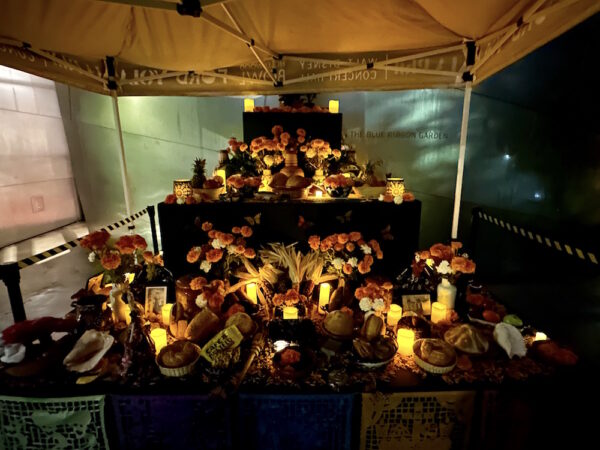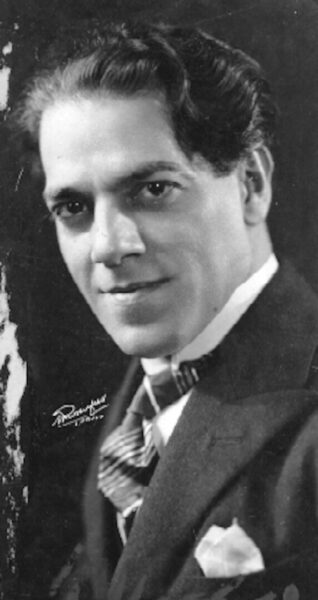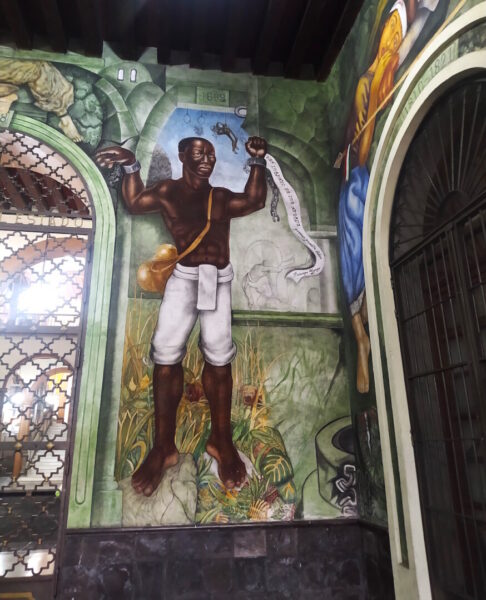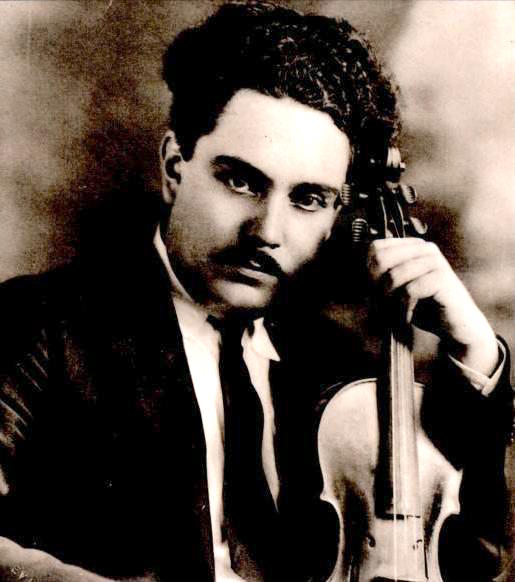I had considered celebrating Día de Los Muertos at Hollywood Forever Cemetery this year, an annual event where 30,000 pack the grounds. In its 25th year, the multi-sensory celebration begins with a procession and continues until midnight.
But I craved music instead, and found it in electrifying Brazilian and Afro-Mexican compositions featured in the Walt Disney Concert Hall LA Phil program, “Día de Los Muertos with Dudamel,” held November 1, 2, and 3. The Tambuco Percussion Ensemble and the Los Angeles Master Chorale were featured.

Día de los Muertos, or Day of the Dead, is the time when altars (ofrendas) are created to welcome friends and family who have died. A thinning of the veil is thought to occur when those existing in the afterlife draw close. Celebrated on November 1 and 2, it’s also a time to remember and honor ancestors.
The program began with a Heitor Villa-Lobos composition, Chôros No. 10, “Rasga o Coração.” Villa-Lobos (1887–1959), the most significant Brazilian composer of the 20th century, blends Brazilian folk music and classical European styles in surprising ways. Born in Rio de Janeiro, he was influenced by indigenous, African, American Indian, and Portuguese folk sounds as well as classical music, introduced by his father. Travels in the Amazon were also an influence, lending his music an immediacy and primal authenticity. (In 1916, he composed “Amazonas” and “Tédio de alvorada,” called “symphonic poems.”)

The sound of urban street musicians figures into “Rasga o Coração” (Chôros means exactly that), a sound furthered by the Los Angeles Master Chorale. The symphonic gravitas of the LA Phil underscored the piece, which was laced with dance rhythms and indigenous chants. At times, the music had a driving bounce to it, and as it approached the conclusion, the sound opened marvelously, as if expanding out to encompass the city.
Writes David Fick in the program notes. “Most notable in its freshness is the hypnotically vigorous second half, in which a driving rhythmic foundation built on the crisp and deliberate patterns of Brazilian dance underlies the soaring lyricism of the chorus as it impersonates the spirit of Indigenous chant.”
A Gaspar Yanga-Influenced Composition For Modern Times

Next up: Yanga, composed by Gabriela Ortiz. Mexican composer Ortiz merges traditional Mexican styles with contemporary classical and electronic influences. Born in 1964 in Mexico City, Ortiz grew up in a family immersed in music; her parents were members of the famous folk ensemble Los Folkloristas. Her inspirations include indigenous rituals, folk songs, and socio-political issues.
Divided into four sections, “Yanga” creates what Ortiz calls a “musical discourse” wherein the choir is used as a rhythmic backdrop in conversation with percussion and the orchestra. The work is inspired by Gaspar Yanga, one of the first leaders of a successful slave rebellion in the Americas. He established a free settlement in the mountainous region near Veracruz, known as Yanga or San Lorenzo de los Negros. His community became a haven for escaped slaves and others seeking refuge from oppression.
“To me, Yanga is a work about an immense expressive force that speaks of the greatness of humanity when in search of equality and the universal right to enjoy freedom to the fullest,” Ortiz writes. From the glissando to the driving percussion expertly performed by the Tambuco Percussion Ensemble, “Yanga” transported the audience at every turn. At times the sound was hushed and at other moments, explosive, driving, and infectious.
Mayan Culture Evoked in Silvestre Revueltas Composition

The third and final composition, “La noche de los Mayas” by Silvestre Revueltas, was composed in 1939 for the film of the same name (The Night of the Mayas). The four-movement suite has become one of Revueltas’ most celebrated works, often praised for its fusion of indigenous Mexican musical traditions with modernist orchestral elements.
The mystique of ancient Mayan culture is embedded in the piece, divided into four movements.
Under Dudamel’s direction, it was easy to imagine the jungle film, given the pulsating intensity and the feel of ritualistic grandeur. Brass and woodwinds set the initial mood with percussion delivering the real blast––from marimbas to congas, bongos timpani, and even a conch shell.
The final movement,” Noche de encantamiento (Night of Enchantment)” was a percussive tour-de-force.
Upcoming LA Phil concerts and events.
